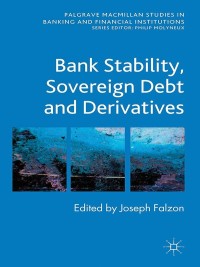



Concord Inc. had net income for the current year ending December 31, 2020 of $908,220. During the entire year, there were 509.000 common shares outstanding. The company had two classes of preferred shares outstanding the Class A preferred shares were $1.88 cumulative shares of which 12,000 were outstanding, and were convertible to common shares at a rate of 1:1. There were 103,000 $4.88 Class B non cumulative preferred shares outstanding that were also convertible at a rate of 1:1. Concord had outstanding a $1,000,000, 6% bond issued in 2009 that was convertible to 22,000 common shares. The company also had outstanding a $1,000,000,5% bond issued in 2010 that was convertible to 26,000 common shares. No dividends were declared or paid this year. Concord's tax rate is 37%. Calculate the income effect of the dividends on Class A preferred shares. Dividends on Class A preferred shares $ Calculate the income effect of the dividends on Class preferred shares. Dividends on Class 3 preferred shares S Calculate basic earnings per share. (For simplicity, linore the requirement to record the debt and equity portions of the convertible bond separately) (Round answer to 2 decimal places, . 15.25.) Basic earnings per shares Calculate the after-tax interest paid on the 2009 bonds. After-tax interest on 2009 bonds converted $ Determine an incremental per share effect for 2009 bonds. (Round earnings per share to 3 decimal places, . 15.257.) Incremental Numerator Effect Potentially dilutive security 2009 Bonds Incremental Denominator Effect EPS Calculate the after-tax interest paid on the 2010 bonds. After-tax interest on 2010 bonds converted $ Determine an incremental per share effect for 2010 bonds. (Round earnings per share to 3 decimal places, e.. 15.257 Incremental Numerator Effect Incremental Denominator Effect EPS Potentially dilutive security 8% Bonds Determine an incremental per share effect for Class A preferred shares. (Round earnings per share to 2 decimal places. 15.25 Potentially dilutive security Incremental Numerator Effect Incremental Denominator Effect EPS Class A preferred shares $ Determine an incremental per share effect for Class B preferred shares. (Round earnings per share to 2 decimal places, s. 15.25.) Incremental Numerator Effect Incremental Denominator Effect EPS Potentially dilutive security Class B preferred shares Rank the potentially dilutive securities from most dilutive to least dilutive. 2009 bonds 2010 bonds Class A preferred shares Class B preferred shares Calculate diluted earnings per share. (Round calculations of EPS to 3 decimal places, eg. 15.25.) . $3.545 and provide final answer to 2 decimal places, Numerator Denominator EPS Basic Sub Total Sub Total Diluted EPS Concord Inc. had net income for the current year ending December 31, 2020 of $908,220. During the entire year, there were 509.000 common shares outstanding. The company had two classes of preferred shares outstanding the Class A preferred shares were $1.88 cumulative shares of which 12,000 were outstanding, and were convertible to common shares at a rate of 1:1. There were 103,000 $4.88 Class B non cumulative preferred shares outstanding that were also convertible at a rate of 1:1. Concord had outstanding a $1,000,000, 6% bond issued in 2009 that was convertible to 22,000 common shares. The company also had outstanding a $1,000,000,5% bond issued in 2010 that was convertible to 26,000 common shares. No dividends were declared or paid this year. Concord's tax rate is 37%. Calculate the income effect of the dividends on Class A preferred shares. Dividends on Class A preferred shares $ Calculate the income effect of the dividends on Class preferred shares. Dividends on Class 3 preferred shares S Calculate basic earnings per share. (For simplicity, linore the requirement to record the debt and equity portions of the convertible bond separately) (Round answer to 2 decimal places, . 15.25.) Basic earnings per shares Calculate the after-tax interest paid on the 2009 bonds. After-tax interest on 2009 bonds converted $ Determine an incremental per share effect for 2009 bonds. (Round earnings per share to 3 decimal places, . 15.257.) Incremental Numerator Effect Potentially dilutive security 2009 Bonds Incremental Denominator Effect EPS Calculate the after-tax interest paid on the 2010 bonds. After-tax interest on 2010 bonds converted $ Determine an incremental per share effect for 2010 bonds. (Round earnings per share to 3 decimal places, e.. 15.257 Incremental Numerator Effect Incremental Denominator Effect EPS Potentially dilutive security 8% Bonds Determine an incremental per share effect for Class A preferred shares. (Round earnings per share to 2 decimal places. 15.25 Potentially dilutive security Incremental Numerator Effect Incremental Denominator Effect EPS Class A preferred shares $ Determine an incremental per share effect for Class B preferred shares. (Round earnings per share to 2 decimal places, s. 15.25.) Incremental Numerator Effect Incremental Denominator Effect EPS Potentially dilutive security Class B preferred shares Rank the potentially dilutive securities from most dilutive to least dilutive. 2009 bonds 2010 bonds Class A preferred shares Class B preferred shares Calculate diluted earnings per share. (Round calculations of EPS to 3 decimal places, eg. 15.25.) . $3.545 and provide final answer to 2 decimal places, Numerator Denominator EPS Basic Sub Total Sub Total Diluted EPS










